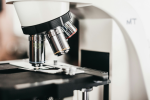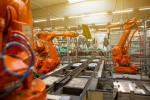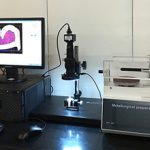Email:
zhaizhongbing723@gmail.com
Frequency converters, as pivotal equipment for regulating the speed of electric motors and for energy-saving and emission-reduction, have been extensively utilized in a multitude of sectors. The upper computer system, acting as the supervisory and management platform for frequency converters, plays a crucial role in improving production efficiency and safeguarding the secure operation of machinery. This article will succinctly cover the relevant content of the development of the upper computer system for frequency converters, encompassing system architecture, functional modules, and key technologies.
The inverter upper computer system primarily consists of hardware and software components. The hardware portion includes industrial control computers, displays, input/output modules, communication modules, etc.; the software portion mainly includes monitoring systems, alarm systems, data processing and analysis systems, etc. The entire system architecture is shown in Figure 1.
In conclusion, the inverter upper computer system is an important component of modern factories and has significant practical significance. The development process should fully consider the system architecture, functional modules, and key technologies to ensure efficient and stable operation. With the continuous development of technology, the inverter upper computer system will be continuously improved, making greater contributions to the development of industrial automation in our country.

Microscope Chromosome Karyotype Analysis Upper Computer Software Development
With the continuous development of biotechnological sci […]

Development of host computer program for electric servo test
The application of electric actuators in various fields […]

Development of an Intelligent Picking System for Robotic Arms Based on Machine Vision
Intelligent manufacturing is gradually becoming an impo […]

Custom Development of an Online Monitoring System for Production Equipment
The manufacturing sector plays an increasingly vital ro […]

Development of a Frequency Converter Upper Computer System
Frequency converters, as pivotal equipment for regulati […]

Custom Development of Ultrasonic Radar Testing Upper Computer
The demand for ultrasonic radars in fields such as auto […]

Software Development for Water Quality Algae Monitoring and Identification System.
Project BackgroundFaced with the professional detection […]

Smart Home Living Kitchen System: Dual-End Cooking Robot APP Development
Project Background To enhance the core competitiveness […]

Smart Weeding Machine Android and iOS Mobile Dual-Platform Control APP Program Development and Customization
Case Background With the advancement of technology and […]

Development of an Automated Control Host Computer System for Laboratory Microscopes
Project Background A certain biotechnology company spec […]

The development of an intelligent self-service charging station control system for new energy electric vehicles
Project Background With the development of smart grids, […]

Cross-border e-commerce shop agent declaration platform system: Oudai independent declaration software customization development
Case Background According to the new regulations on com […]


WhatsApp:
Email:zhaizhongbing723@gmail.com
Address:Zone E, 10th Floor, HongKong Shenzhen International Center, Longhua District, Shenzhen